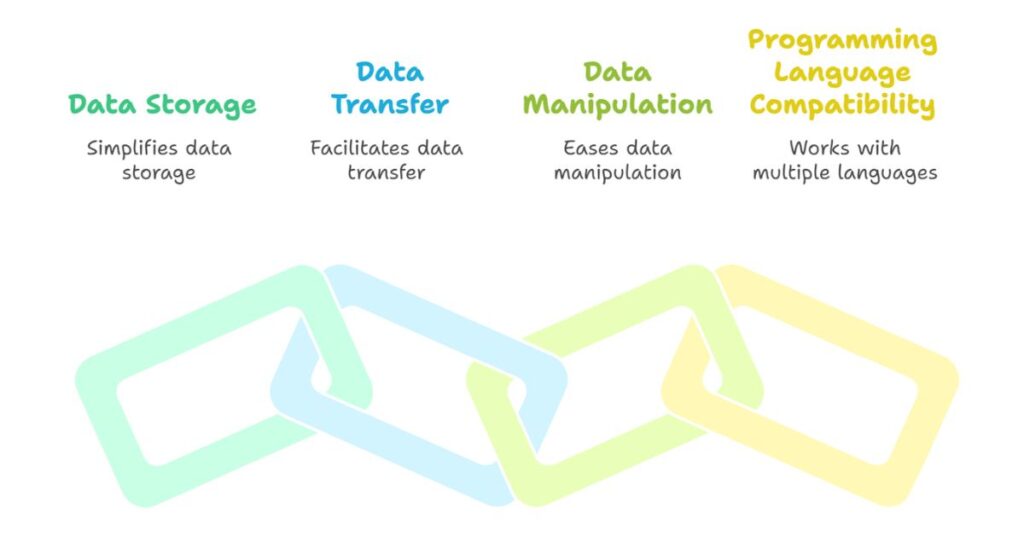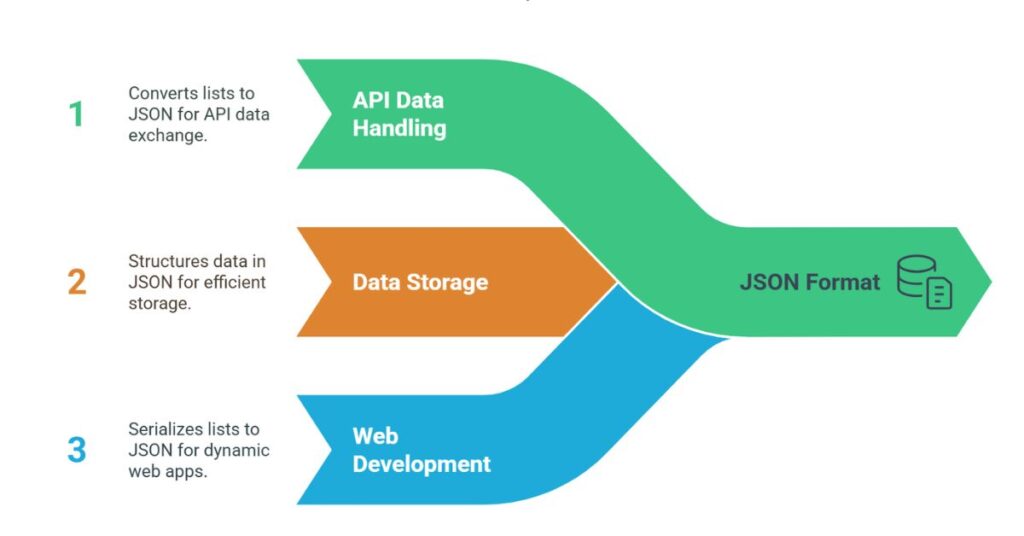List to JSON Converter
Table of Contents
List to JSON conversion is an essential process in data management. It helps transform lists of items into a format that computers can easily understand and work with. JSON (JavaScript Object Notation) is widely used in web applications and APIs. This article will explain how to convert lists to JSON format and why it is important in IT and software development.
Why Convert Lists to JSON?
JSON is a lightweight format used for storing and exchanging data. It is easy to read and write, making it ideal for data exchange between a server and a web application. In many cases, developers need to convert lists into JSON format to simplify data manipulation and integration.

For instance, lists of items, such as a list of users, products, or any other data, can be converted into JSON to make it easier to store and transfer in software systems. By converting lists to JSON, we can store the data in a structured format that is easy to process and manipulate using programming languages like JavaScript, Python, or others.
The Role of JSON in Web Development
In web development, JSON serves as the backbone for data exchange. When data is transferred between a client (browser) and a server, JSON is often the preferred format. It is easy to parse, and its structure matches the way data is organized in objects, making it highly compatible with programming languages.
For example, when a user submits a form on a website, the form data might be converted into JSON format before sending it to the server. Once the server processes the data, it can return a JSON response to the client, which can then be displayed on the webpage.
How to Convert a List to JSON Format
Converting a list to JSON is a straightforward process, especially with the right tools. Below, we will guide you through the steps involved in converting a list to JSON using an online tool or custom code.
Step 1: Prepare Your List
Before converting a list into JSON, ensure that your list is organized. A list can be made of numbers, strings, or even objects. For instance, a list of fruit names might look like this:
Apple
Banana
Cherry
Step 2: Use a List to JSON Converter Tool
An online List to JSON converter is the easiest way to perform the conversion. You can simply copy your list and paste it into the tool’s input box. The tool will automatically convert your list into JSON format.
For example, the list of fruits mentioned above will convert to:
["Apple", "Banana", "Cherry"]
Step 3: Manual Conversion Using Code
If you prefer to do the conversion manually, you can use programming languages like JavaScript or Python. Here’s an example in JavaScript:
const fruits = ["Apple", "Banana", "Cherry"];
const jsonFruits = JSON.stringify(fruits);
console.log(jsonFruits);
This code snippet will produce the following JSON output:
["Apple", "Banana", "Cherry"]
In Python, you can use the json library to convert a list to JSON:
import json
fruits = ["Apple", "Banana", "Cherry"]
json_fruits = json.dumps(fruits)
print(json_fruits)
This will also output:
["Apple", "Banana", "Cherry"]
Applications of List to JSON Conversion

List to JSON conversion has many uses in modern software development. Some common applications include:
API Data Handling
When working with APIs, developers often need to send or receive data in JSON format. Lists, whether they represent users, products, or other data, are frequently converted to JSON before transmission. For example, an API might return a list of products in JSON format for a shopping website.
Data Storage
Many databases and file systems use JSON format to store data. By converting lists to JSON, developers can easily store data in a structured and readable way. This is especially useful for NoSQL databases like MongoDB, which store data in a JSON-like format (BSON).
Web Development
In web development, converting lists to JSON is crucial for dynamic web applications. When data needs to be passed from the server to the client, it is often serialized into JSON format. Lists of items can be easily converted to JSON for use in dynamic interfaces like dropdowns, lists, and tables.
Benefits of Using a List to JSON Converter
Time-Saving
Manually converting lists to JSON can be time-consuming and error-prone. Using a List to JSON converter simplifies the process, allowing developers to save time and focus on other tasks.
Accuracy
Manual conversion may lead to mistakes, especially with complex lists. A tool ensures that the JSON output is accurate and properly formatted. This is important when working with large datasets or when the data is used in production environments.
Easy Integration
JSON is widely supported by programming languages, databases, and web services. Converting lists to JSON makes it easier to integrate data into applications or systems that use JSON for data exchange.
Conclusion
The List to JSON conversion process is a crucial part of data management in web development and software engineering. By converting lists into JSON, developers ensure that data is stored, exchanged, and processed efficiently. Tools and code snippets make the process quick and easy, saving time and reducing errors. Whether you are working with APIs, databases, or web applications, understanding how to convert lists to JSON is an essential skill for any IT professional.
By using List to JSON converters, developers can streamline their workflows and ensure that their data is in the correct format for smooth integration with other systems. The versatility of JSON and its widespread support in modern software development make it a key tool for handling and sharing data effectively.